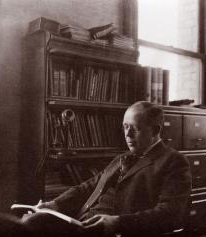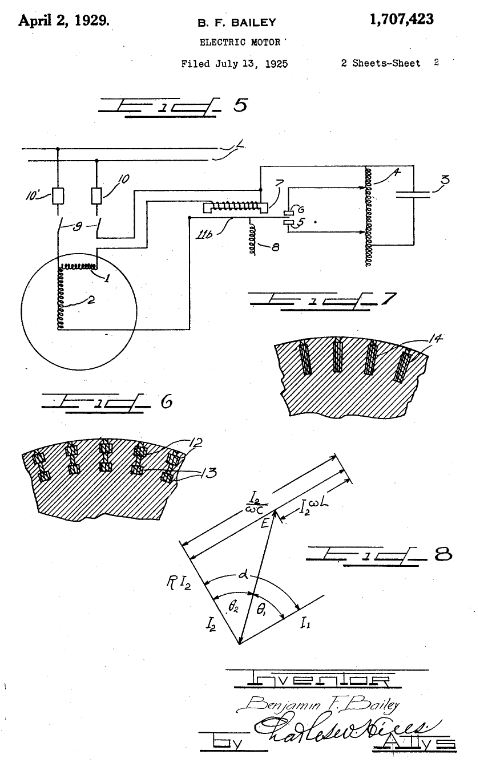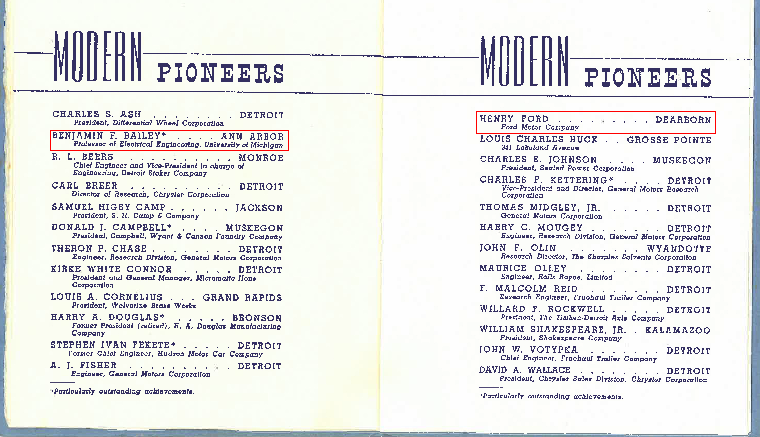Benjamin F. Bailey

 Enlarge
Enlarge
Benjamin Franklin Bailey (1875-1954) was an inventor, historian, and colorful writer who spent nearly his entire career in the Department of Electrical Engineering.
He received his bachelor’s, master’s, and PhD degrees from the University of Michigan in 1898, 1900, and 1907 respectively. He left Michigan only briefly before returning as an instructor and ultimately, the department’s longest-sitting Chair.
Bailey took a noticeable interest in electronics at the age of 10, when he started building telegraph systems and simple telephones. A Detroit native, he took his first science class in high school and decided that engineering was his destiny.
After receiving his bachelor’s degree, Bailey spent a short period of time working at Detroit Edison Company with Henry Ford, where he was in charge of the steam machinery. He returned to Michigan in 1899 as an instructor at the Medical School in Electro-Therapeutics, quickly moving on to professor of Physics before finding his final home in Electrical Engineering.

 Enlarge
Enlarge
Bailey had strong ties to industry, and invented a number of electrical devices. The most important of these was the single-phase capacitor motor, completed in 1925, which rivaled a two-phase motor in efficiency – previously believed to be impossible. According to Bailey’s grandson, Detroit Edison approached Bailey to find out whether anyone could invent a motor that would enable refrigeration in the home. He did the calculus in his head and said it was possible, and then set to inventing it.
The motor was widely used, especially on electric refrigerators. Some of the money from his patents was spent on laboratory equipment. Because of this invention, Bailey was honored as a Modern Pioneer in the American Frontier of Industry by the National Association of Industry at a ceremony held February 15, 1940, along with Henry Ford, founder of the Ford Motor Company and inventor of the Model T.

 Enlarge
Enlarge
A few other important machines he either invented or improved include automobile ignition and lighting systems, starting mechanisms for motors of high starting torque, electrolytic interrupters and rectifiers, a device for cooling completely enclosed motors, and a synchronous motor for electric clocks.
The “Marquis Who’s Who in America” listed him as a patent expert, consulting engineer and director at the Howell Electric and Fairbanks Morse Motor Companies, and director and vice president of Fremont Motor Corporation. He wrote several books throughout his career, including: Induction Coils, 1903; Induction Motors, 1911; Elementary Electrical Engineering, 1913; and Principles of Dynamo Electrical Machinery, 1915.
Bailey was a member of the Society of Automotive Engineers and a Fellow in the American Institute of Electrical Engineers. He loved boating, and when he couldn’t find a marine engine he was happy with – he built his own.
References and Further Reading
The Induction Motor by Benjamin Bailey
Benjamin Bailey: U-M Faculty History Project
 MENU
MENU 
